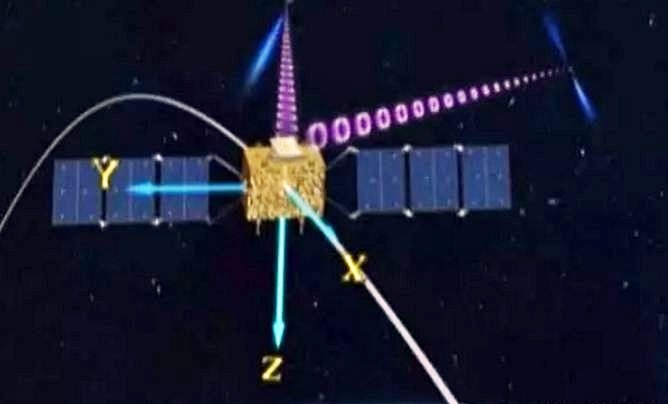The second launch of China's Long March-11 solid fuel rocket built for quick and reliable launches of light payloads successfully placed five small satellites into low Earth orbit (LEO) on Nov. 9.
The launch took place from a mobile transporter erector launcher at the Jiuquan Satellite Launch Center located at the Inner Mongolia Autonomous Region. Jiuquan was the first Chinese satellite launch center
Onboard the Long March-11 ((Chang Zheng-11) rocket was the XPNAV-1 pulsar navigation satellite; the Xaiaoxiang-1 and three Lishui-1 satellites.
With a launch mass of 240 kg, XPNAV-1 (X-ray Pulsar NAVigation) will test autonomous spacecraft navigation. X-ray pulsar navigation is a navigation tool that uses periodic X-ray signals emitted from pulsars to determine the location of a spacecraft in deep space.
Current ground-based navigation methods are limited by the time delay between spacecraft and the Earth. For certain type of pulsars called "millisecond pulsars," pulses of radiation occur with the regularity and precision of an atomic clock.
As a result, the pulsar X-ray can take less time to estimate a location in some scenarios. This leads to more precise measurements of a spacecraft's location.
This technique has to be tested in space since X-rays from pulsars are absorbed by the atmosphere. XPNAV-1 will detect the details of X-ray signals of 26 nearby pulsars and build a pulsar navigation database. This goal might be achieved within five to 10 years.
It carries two detectors to test its functions in responding to the background noise of the Universe, outline pulsar contours and create a database for pulsar navigation. The satellite was developed by the Aerospace Science and Technology Corporation (CASC) Fifth Academy.
X-ray pulsar navigation techniques will help to reduce the reliance of spacecraft on ground-based navigation methods and are expected to achieve autonomous spacecraft navigation in the future.
X-ray pulsars consist of a magnetized neutron star that draws gas from a companion star. This interaction forms a rotating disk that channels the gas to its magnetic polls, and generates of intense energies. X-ray plusars are found in deep space and act like signal buoys.
Xiaoxiang-1 is a 6U CubeSat designed, developed and manufactured by the Changsha Gaoxinqu Tianyi Research Institute. Weighing 8 kg and placed on a 500 km LEO orbit, the small satellite will test new stabilization system for imaging devices installed in satellites.
The three Lishui-1 satellites were developed by the Zhejiang LiTong Electronic Technology Co., Ltd. These are small commercial remote sensing satellites.



























